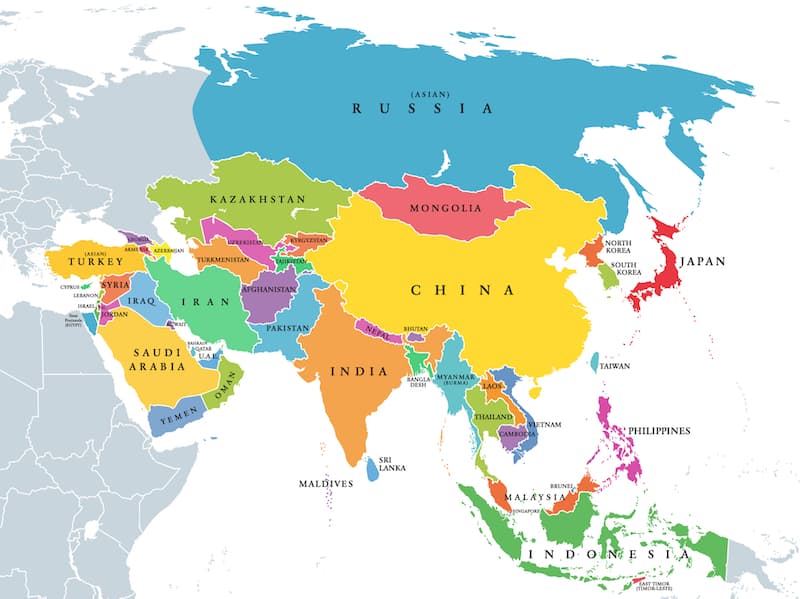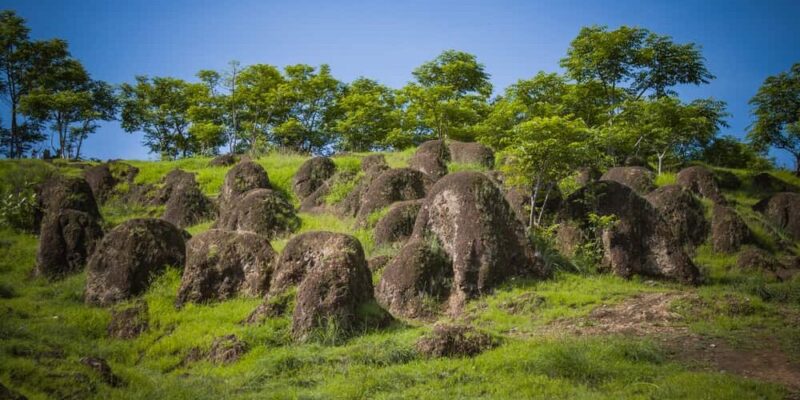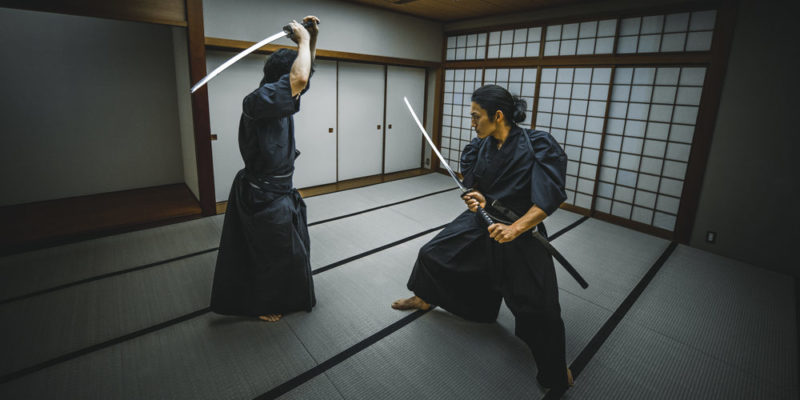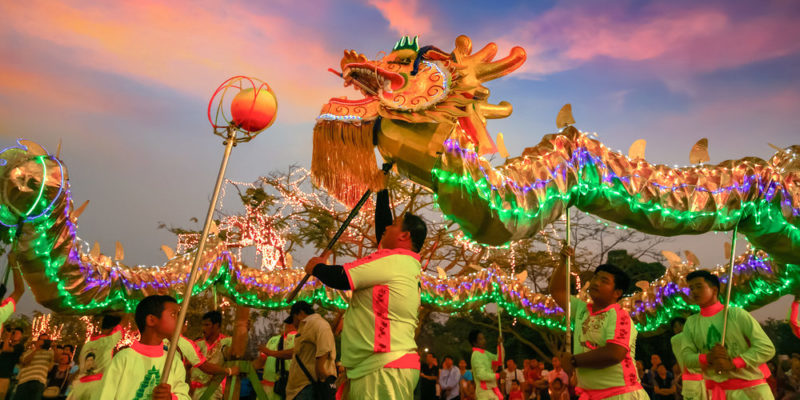We explain what oriental culture is, the regions it covers, its history and background. In addition, its characteristics and customs.
What is Eastern culture?
Oriental culture is a set of values , customs, and religious beliefs, which is representative of the Asian countries on the eastern side of Eurasia . Due to the vast extension of the territory and the diversity of populations , a heterogeneous culture with different origins and different processes of cultural formation results. Among the most influential civilizations are China , Korea, Japan , India and Mongolia .
Eastern culture regions
 The vast territory of Asia that comprises the Eastern culture is subdivided into the following regions:
The vast territory of Asia that comprises the Eastern culture is subdivided into the following regions:
- Soviet Central Asia (former Soviet Union ). It covers the territories of Kazakhstan, Uzbekistan, Turkmenistan, Kyrgyzstan, Tajikistan, Siberia and the Caucasus slope.
- Eastern Asia. It covers the territories of China, Mongolia, Tibet, Japan, North Korea and South Korea.
- South Asia. It covers the territories of Bangladesh, Bhutan, India, Nepal, Pakistan and Sri Lanka.
- Southeast Asia. It covers the territories of Brunei, Cambodia, the Philippines, Indonesia, Laos, Malaysia, Myanmar, Singapore, Thailand and Vietnam.
- Southwest Asia. It covers the territories of Saudi Arabia, Afghanistan, Iran, Iraq, Israel, Jordan, Kuwait, Lebanon, Syria, Turkey and the Arabian Peninsula.
Eastern culture background
 According to archaeological evidence , the most remote antecedents of oriental culture date back to prehistory . For example: Megaliths, which are large ancient monuments that have been found in different regions of Asia, such as the Batu kenong megalith in Indonesia that dates back to the Iron Age .
According to archaeological evidence , the most remote antecedents of oriental culture date back to prehistory . For example: Megaliths, which are large ancient monuments that have been found in different regions of Asia, such as the Batu kenong megalith in Indonesia that dates back to the Iron Age .Researchers' theories suggest that the culture of Asia began in Ancient Egypt and the Mediterranean region .
Despite their wide historical and cultural diversity , Europe and Asia are considered the cradles of civilization by territories such as Mesopotamia , south of the current territory of Iraq, India and China, where imposing cities were developed more than 4000 years ago states, while in the rest of the world most humans still lived nomadically.
Around 3500 BC. C. the Sumerians invented the first written cuneiform alphabet embodied in clay tablets, which allowed knowing the customs and ways of life of antiquity. In parallel , various independent cities arose that around 3000 a. C. came together to form the first empire: the Akkadian, although it lasted a short time.
The earliest traces of Chinese writing date back to 1700 BC. C. during the Shang dynasty and consisted of inscriptions on flat bones of the shoulder blades of oxen or tortoise shells. The writings were considered oracles that were used for divination.
The various civilizations of Mesopotamia and East Asia had in common the type of polytheistic religion , in which they worshiped multiple gods who used to represent different phenomena of nature, and monumental architecture , in which they built large temples and buildings.
In the 1800 a. C. two main cultures stood out in the region of Mesopotamia, the Assyrians and the Babylonians , who were later dominated by the Persians who formed a people of warriors.
During ancient times the following Eastern cultures predominated:
- The Chinese Dynasties . Among the main ones are the Xia dynasty (2100 – 1600 BC), the Shang dynasty (1766 – 1122 BC), the Zhou dynasty (1046 – 256 BC) and the Han dynasty (206 BC). C. – 220 AD).
- Confucianism. It is a religious and ethical philosophy that emerged in China around the third century BC. C. based on the ideas of the Chinese thinker and official Confucius (551 – 479 BC). Confucianism holds that personal effort and human values are the harmonic principle that governs the universe.
- Taoism. It is a religion originated in China in the 5th century BC. C. based on the ideas of the Chinese philosopher Laozi. It supports the idea of the tao, which means "way", to live in harmony with the universe. That path is not spiritual or material, but metaphysical and that duality is reflected in the symbol of "yin and yang".
- Buddhism . _ It is a religion originated in China from 200 BC. C. and that reached Korea and Japan. In the latter it merged with the Shinto religion. He maintains that to achieve reincarnation it is necessary to lead a life of stillness, contemplation, austerity and moral discipline.
- The Mongol Empire . It stood out for being a nomadic people that spread throughout Persia, Turkey and Russia. Over time it was weakened by internal conflicts and was overthrown by the Yuan dynasty in 1368 AD. c.
- The kingdoms of Korea. They stood out for the formation of three kingdoms: the Goguryeo, Baekje and Silla. The kingdoms shared various cultural traits, but fought for dominance in the region.
- The Japanese empire. It stood out for its armed struggles, such as the Sino-Japanese War of 1894 and participation in the First World War of 1914, among others. Japan managed to develop its own religion and philosophy , despite the great influence of Chinese culture . He professes the Shinto religion.
Eastern culture in modernity
Oriental culture in modernity continued to be diverse according to the geographical region of each population. For example: In Southwest Asia, intense and frequent warfare occurs , such as in Palestine, Israel, Afghanistan or Iraq, while in the territories located in East Asia, political and ideological differences coexist in a more balanced way , such as in China, India or Hong Kong.
Characteristics of Eastern culture
 Despite its diversity and its vast reach, Eastern culture is characterized by being a pioneer in multiple branches of knowledge :
Despite its diversity and its vast reach, Eastern culture is characterized by being a pioneer in multiple branches of knowledge :
- The invention of cuneiform writing and the alphabet of letters.
- The observation and study of astronomy .
- Advances in mathematics and measurement calculations.
- Advances in medicine , through the examination of the human body and the creation of natural antidotes based on herbs and plants.
- Polytheistic religion , philosophical and spiritual ideas, such as Buddhism and Hinduism .
- The development of martial arts , such as judo, karate, kung fu, sumo, among others.
Today, Eastern culture is characterized by being divided into two main cultural areas:
- Southeast culture. It covers the regions of East and Southeast Asia and is characterized as one of the most linguistically diverse areas in the world, with major languages such as Sino-Tibetan and Malayo-Polynesian. The predominant religions are Shinto and Buddhist.
- South-Central culture. It covers the regions of the former Soviet Union and Central and Southwest Asia. It is characterized by the Indo-European, Semitic (of Afro-Asian origin) and Altaic languages (group of languages such as Turkish or Mongolian). The predominant religions are Islam , Hinduism and Christianity .
Oriental customs

Among the main oriental customs are:
- The tradition of taking off one's shoes when entering a home , establishment, or temple. It is a way of not entering impurities or bad energies from the outside.
- The custom of eating with bamboo or wooden chopsticks. It is considered rude to stick your chopsticks in your food or leave them on your plate once you have finished eating. They should be left next to the plate, on the tablecloth.
- The lantern festival celebrated in China on the first full moon of the year, in commemoration of the Chinese New Year. The streets and other public spaces are decorated with various paper lamps, as well as parades of floats and extensive paper dragons that are supported by rows of people who dance to the rhythm of the music .
- Sumo as the national sport of Japan that consists of a type of wrestling unlike any other in its discipline. Athletes weigh more than a hundred kilos and train for greater strength and greater body weight.
- The Dragon Boat religious and sports festival is a spiritual tradition celebrated on the fifth day of the fifth month of the Chinese calendar. Dragon worship and ancestor worship are worshiped through rowing boat races.
- The bindi or red dot that is painted on the forehead between the eyes and is a religious custom in India. It is a symbol that represents the chakra of spiritual wisdom.
- The green tea ceremony in Japan , which is a Buddhist ritual in which a small group of guests gather in a quiet place and share wisdoms, such as gratitude, contemplation, and calm. It can last several hours and is usually performed at religious events.
- Rice in all its varieties , which consists of the essential food of the East that is used in the preparation of pasta, elaborate dishes such as sushi, as a filling and in desserts. Even red rice extract is marketed in herbalists for its health attributes.
- Eastern writing systems that are very different from Western styles, both because of the direction of writing that is from right to left, and the type of symbols that they use instead of a letter for each phoneme. The Japanese, Chinese or Arabic alphabets use different symbols, although they have in common that they represent concepts, not just a letter or phoneme.
Philosophy of eastern culture

The philosophy of Eastern culture in general is based on religious thought and spirituality , as opposed to Western philosophy which is only based on reason and analytical thinking.
Eastern philosophy is based on balance with the universe, on the knowledge of being and its relationship with nature . It proposes to understand and accept nature as it is, instead of controlling it.
It is a way of living and not just a part of thinking that requires an advanced intellectual level.
The above content published at Collaborative Research Group is for informational and educational purposes only and has been developed by referring to reliable sources and recommendations from technology experts. We do not have any contact with official entities nor do we intend to replace the information that they emit.
Abubakr Conner brings a diverse skill set to our team, and covers everything from analysis to the culture of food and drink. He Believes: "Education is the most powerful weapon that exists to change the world." .
Leave a reply
Your email address will not be published. Required fields are marked *Recent post

Sport: What Is It, Types, Risks, Features, Characteristics and Examples

Dogs: Emergence, Features, Characteristics, Feeding and Breeds

Story: Definition, Elements, Structure, Features and Characteristics

